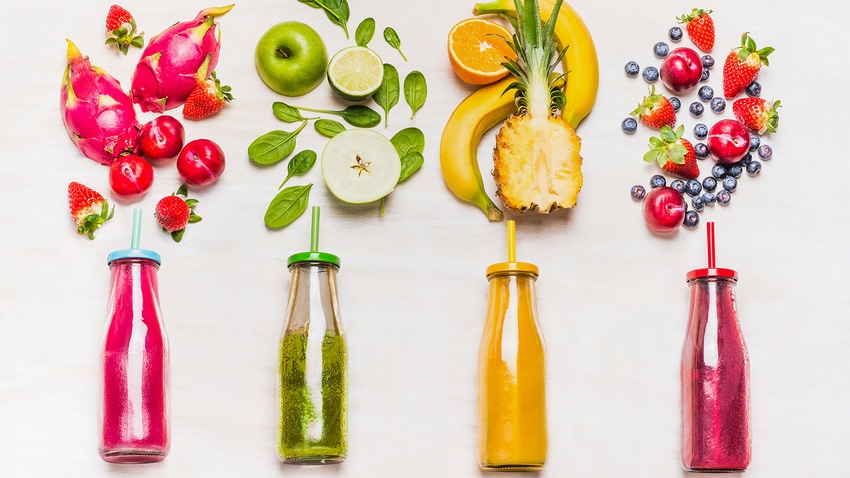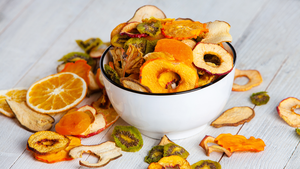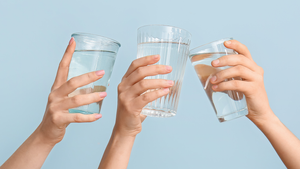Flavor forward: Women-centered wellness beverages evolve as consumers’ palates progress
The evolving landscape of women’s health, encompassing physical, mental and social factors, has led to a surge in wellness drinks in this category, particularly through functional beverages offering a more enjoyable and accessible alternative to traditional supplements.

At a Glance
- Women’s health is undergoing a radical redefinition, with a focus on holistic wellness and intersectionality.
- Functional beverages are a growing trend and they’re well-positioned to deliver the health benefits women are looking for.
- Successful products feature flavors associated with health and wellness like citrus, berry blends and herbal infusions.
Women’s health is undergoing a radical redefinition, and that makes now an exciting time to formulate functional beverages. After all, these trending applications may well be the ideal vehicles for delivering the health benefits that drive women’s purchases today.
Savvy brands are wise to this, and they’re responding with wellness drinks that not only offer up the good-for-you goods but do so in a refreshing palate of “on-message” flavors that underscore why functional beverages are winning with women in the first place: Enjoying them literally feels good.
At the intersection
Mohammad Emami, director of marketing and business development at Bartek Ingredients, has had a ringside seat to the women’s wellness revolution, and what impresses him are the pace and scope that characterize the evolution.
“In the past five to 10 years, the entire concept of women’s health has grown to encompass a more holistic understanding that goes beyond the purely physiological to include a wider range of physical, mental and social factors,” he said.
And “wider” understates the case, given that health is only one node in an “intersectionality” that unites women’s health with everything from socioeconomic status and race to “affectional orientation,” Emami explained.
Bridging the gap
Awareness of this intersectionality is translating into awareness of how mental and emotional states contribute to conditions like postpartum depression and anxiety, added Philip Caputo, marketing and consumer insights manager at Virginia Dare.
“Years ago, these areas were likely to have been seen as alternative medicine, or not given much attention,” he said.
The landscape is changing, however. How so? “With recognition of the gender health gap now spreading, women’s needs around conditions like osteoporosis, thyroid disease, UTIs and more are gaining greater appreciation,” Caputo explained. And not a moment too soon.
Fitting the bill
Of course, women’s multivitamins and prenatal supplements have long been shelf staples at pharmacies and supermarkets alike. “But products that address women’s health via other means can also help bridge the gap,” Caputo said, which is where functional beverages come in.
We all know that downing a pill is “at best a neutral experience,” Caputo pointed out, and at its worst, “a chore since many supplements are large and you need to take two at once.”
By contrast, “A delicious functional drink fits the bill for women looking to support mental health, the gut microbiome, aging or skincare,” Caputo continued. “Functional beverages can even be social experiences when combined with other trends like alcohol alternatives.”
No wonder Emami describes beverages’ core consumers as females between the ages of 35 and 55. “This group believes that functional drinks can lead to positive health,” he said. “And as more research on female physiology emerges, this group will continue to stay informed and interested in products designed to improve their quality of life.”
Achieving alignment
They’ll also continue to look for beverages that “offer pleasant, memorable experiences and unique taste profiles,” Emami added.
Here, fruit flavors make logical choices, according to Emami, as consumers intuitively associated them with health and wellness. “Successful profiles often feature refreshing flavors, such as citrus, berry blends and herbal infusions, creating a harmonious connection between taste and health-conscious messaging,” he said.
And harmony matters: “Aligning the flavor profile of a women’s wellness beverage with its health benefits is crucial for consumer engagement and trust,” Emami explained. “When taste corresponds to perceived benefits, it reinforces a product’s authenticity and enhances the overall experience—not just promoting a positive consumer perception but contributing to the beverage’s effectiveness in catering to women’s wellness needs, too.”
Diverse tastes
Caputo agreed. “Flavors like blueberry, ginger, goji berry and green tea have a health halo because their functional benefits are already ingrained in the public consciousness,” he said. “There’s less to spell out in brand marketing because the function and flavor play off each other.”
A wellness drink with a jelly donut profile—while potentially scrumptious—might introduce “some cognitive dissonance,” Caputo said. But even this rule has its exceptions.
“Take protein powders,” he explained. “Indulgent flavors like cookie batter and brownie are everywhere—even in health products.” The lesson he takes is that “branding and what your audience wants should determine flavor profile more than any black-and-white rule.”
Maintaining balance
It’s a valuable reminder that women’s tastes are as diverse as they are. “Products geared towards women can benefit from layered, nuanced flavors, but it’s important not to generalize these findings to all women,” Caputo said.
What we probably can generalize is women’s insistence that functional beverages taste great. But that can be a hard nut for formulators to crack when the very ingredients that add functionality also add bitter, medicinal and often unpleasant notes.
In correcting for those drawbacks, Caputo explained Virginia Dare first modulates existing flavors “to bring out the best profiles and tone down the worst.” And when flavor challenges get really daunting, the company combines modulation with its flavor-masking portfolio to cover any lingering off notes.
For its part, Bartek “advocates for a broader exploration of ingredients in the toolbox, urging formulators to move beyond the conventional selection of acids and buffers when creating fruit-flavored drinks to try solutions like our Uplift Taste Modification Technology, which not only amplifies existing flavor profiles but also effectively masks any undesirable notes linked to other active ingredients,” Emami said.
If the results pass muster with female shoppers, they’ll have won over some tough customers. “Some winetasting experts have noticed that women seem to pick up flavor profiles more quickly, with food science and nutrition researcher Dr. Linda M. Bartoshuk estimating that while 15% of men are supertasters—people with heightened taste sensitivity—35% of women are,” Caputo said.
About the Author(s)
You May Also Like






